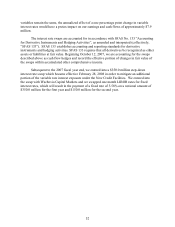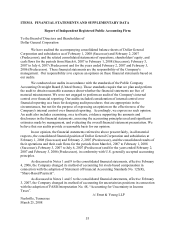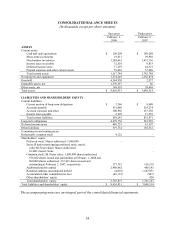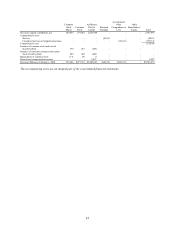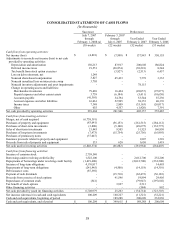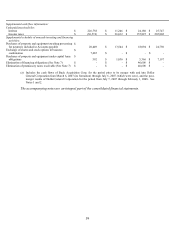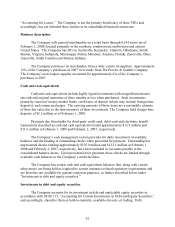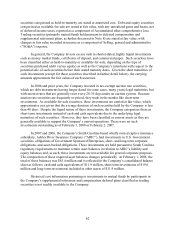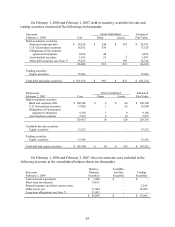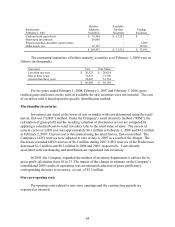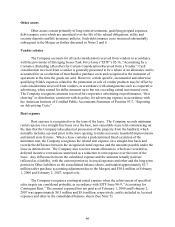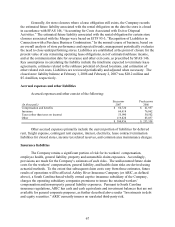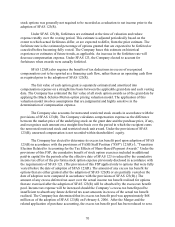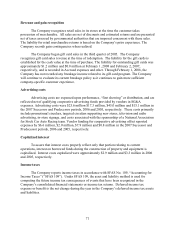Dollar General 2007 Annual Report Download - page 64
Download and view the complete annual report
Please find page 64 of the 2007 Dollar General annual report below. You can navigate through the pages in the report by either clicking on the pages listed below, or by using the keyword search tool below to find specific information within the annual report.62
securities categorized as held-to-maturity are stated at amortized cost. Debt and equity securities
categorized as available-for-sale are stated at fair value, with any unrealized gains and losses, net
of deferred income taxes, reported as a component of Accumulated other comprehensive loss.
Trading securities (primarily mutual funds held pursuant to deferred compensation and
supplemental retirement plans, as further discussed in Note 8) are stated at fair value, with
changes in fair value recorded in income as a component of Selling, general and administrative
(“SG&A”) expense.
In general, the Company invests excess cash in shorter-dated, highly liquid investments
such as money market funds, certificates of deposit, and commercial paper. Such securities have
been classified either as held-to-maturity or available-for-sale, depending on the type of
securities purchased (debt versus equity) as well as the Company’ s intentions with respect to the
potential sale of such securities before their stated maturity dates. Given the short maturities of
such investments (except for those securities described in further detail below), the carrying
amounts approximate the fair values of such securities.
In 2006 and prior years, the Company invested in tax-exempt auction rate securities,
which are debt instruments having longer-dated (in some cases, many years) legal maturities, but
with interest rates that are generally reset every 28-35 days under an auction system. Because
auction rate securities are frequently re-priced, they trade in the market like short-term
investments. As available-for-sale securities, these investments are carried at fair value, which
approximates cost given that the average duration of such securities held by the Company is less
than 40 days. Despite the liquid nature of these investments, the Company categorizes them as
short-term investments instead of cash and cash equivalents due to the underlying legal
maturities of such securities. However, they have been classified as current assets as they are
generally available to support the Company’ s current operations. There were no such
investments outstanding as of February 1, 2008 or February 2, 2007.
In 2007 and 2006, the Company’ s South Carolina-based wholly owned captive insurance
subsidiary, Ashley River Insurance Company (“ARIC”), had investments in U.S. Government
securities, obligations of Government Sponsored Enterprises, short- and long-term corporate
obligations, and asset-backed obligations. These investments are held pursuant to South Carolina
regulatory requirements to maintain certain asset balances in relation to ARIC’ s liability and
equity balances and, as such, these investments are not available for general corporate purposes.
The composition of these required asset balances changes periodically. At February 1, 2008, the
total of these balances was $63.4 million and is reflected in the Company’ s consolidated balance
sheet as follows: cash and cash equivalents of $11.9 million, short-term investments of $19.6
million and long-term investments included in other assets of $31.9 million.
Historical cost information pertaining to investments in mutual funds by participants in
the Company’ s supplemental retirement and compensation deferral plans classified as trading
securities is not readily available to the Company.


